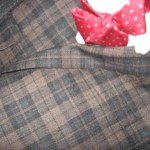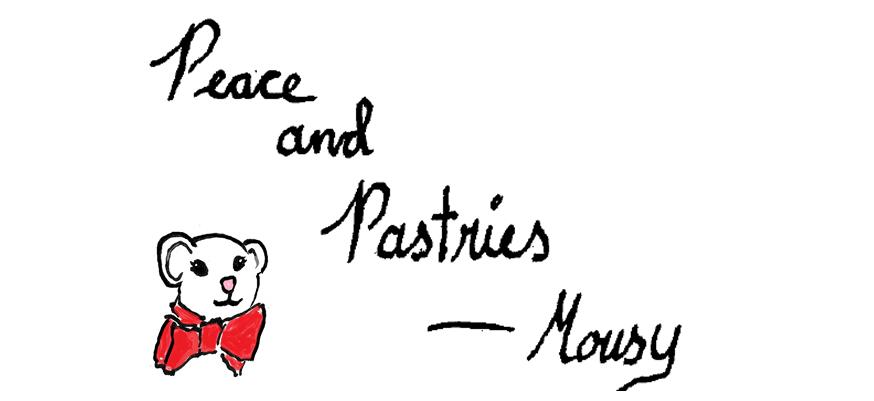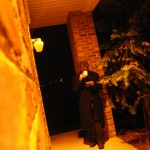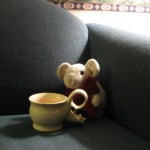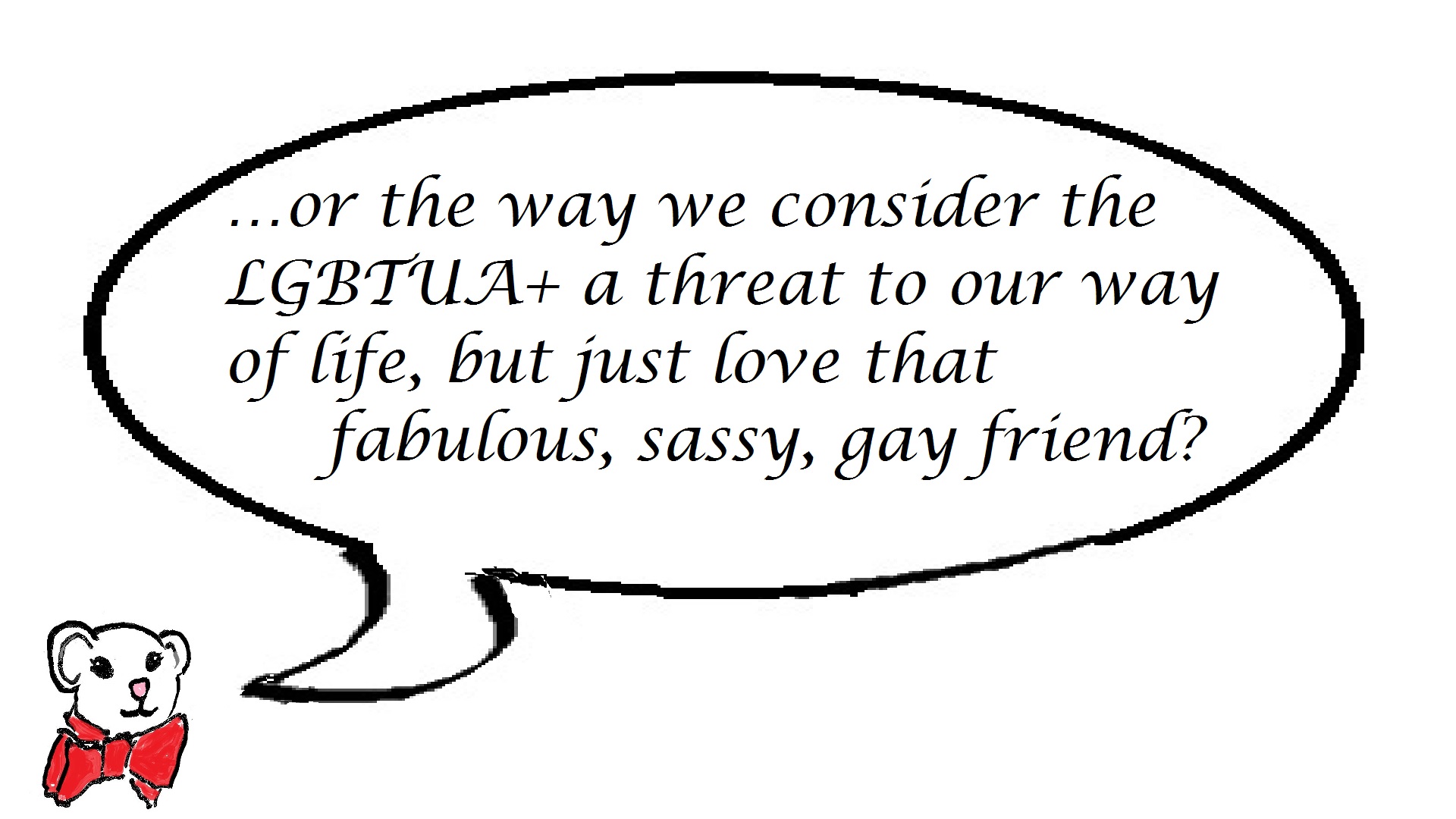Dr Bear is rather busy at the moment, and behind on his deadlines (no surprise there). I have never been exactly clear on the rationale behind mowing lawns; it seems like such a waste of time. However, I decided to burrow in and give it a try.
On Easter, we had a sweet discussion with Alex, our fantasy IT girl, and some really cool girl (Katie? Maybe?) about tweed.
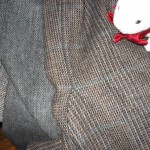 Tweed is a rough surfaced woolen cloth, generally marked by irregular variations in color. The predominant colors are natural and earth-tones, especially the browns and grays of traditional wools and woolen dyes. The threads of the wool are wide and irregular—twills of wool that probably gave tweed its original name. The epicenter of tweeds is along the Tweed river in Scotland, but tweeds are woven throughout the British Islands.
Tweed is a rough surfaced woolen cloth, generally marked by irregular variations in color. The predominant colors are natural and earth-tones, especially the browns and grays of traditional wools and woolen dyes. The threads of the wool are wide and irregular—twills of wool that probably gave tweed its original name. The epicenter of tweeds is along the Tweed river in Scotland, but tweeds are woven throughout the British Islands.
The main differences in tweeds are the colors and the designs of the weave.
There can be a fairly straightforward weave.
There can be one with the weave more pronounced, 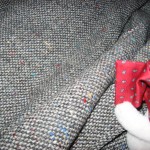 often called “barley-corn” tweed. These are usually marked by contrasted colors on the little bumps or barley-corns.
often called “barley-corn” tweed. These are usually marked by contrasted colors on the little bumps or barley-corns.
A Donegal tweed, from the northern counties of Ireland where Dr Bear’s people came from, is a little more regular than the more over-the-top barley-corn, in regular little patterns.
This can be small or big,
subtle or less so.
It can be gradations of the same color, sympathetic colors, or even contrasting colors.
If you want loud, wear Argyle or Tartan, not Tweed.
If you want ugly, wear Madras, and please stay far away.
Another design is Herring-bone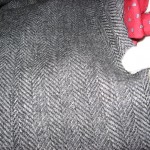
tweed, named because the alternating diagonal patterns
look like fish bones.
This is classic, and probably my favorite.
Another is hounds-tooth, 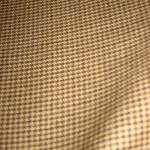 an irregular design vaguely resembling a dog’s tooth. (shudder.) This one on my left is a tan and brown summer weight, so it can be worn in warmer weather.
an irregular design vaguely resembling a dog’s tooth. (shudder.) This one on my left is a tan and brown summer weight, so it can be worn in warmer weather.
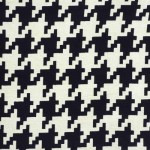
A well-known non-traditional variation on this is the iconic black & white hounds-tooth. Which is classy, but mostly for women’s wear.
It makes me think of Audrey Hepburn, which is always good. sigh.
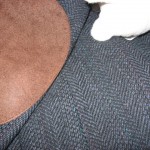 And, as I said, any design can come in different colors, like this blue herringbone tweed.
And, as I said, any design can come in different colors, like this blue herringbone tweed.
Unlike gray and brown, blue is not a conventional tweed color, but I suppose we would not expect conventional from Dr Bear.
Also, you can alternate patterns, 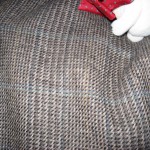 like check and hounds-tooth, to get new combinations.
like check and hounds-tooth, to get new combinations.
This one alternates a wider hounds-tooth with a smaller one (pups-tooth. Yes! Really! giggle.) and is woven with a light bluish over-check.
In the 19th century, many of the great country houses had their distinct house tweed, created by alternating patterns in a set way. This is called Estate Tweed.
Not at all the same as tartan.
Classy, but tied to hunting, so uncool.
Having the participants well-dressed certainly does not dress up a blood sport.

It is warm, and surprisingly water resistant, having many of the natural properties of sheep wool. It is classy, although not formal—never a business suit, or dinner-wear. It is the material of Sherlock’s Deer Stalker.
It also looks great with bow-ties.

